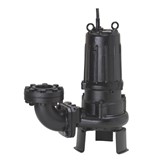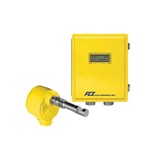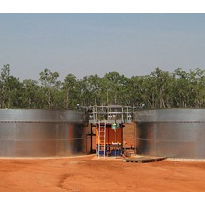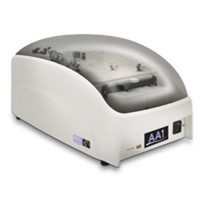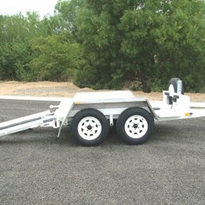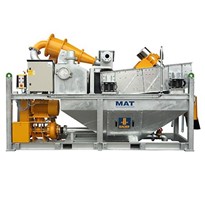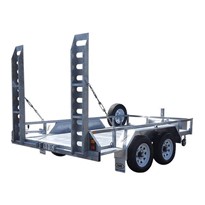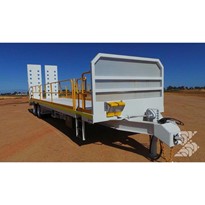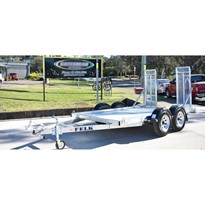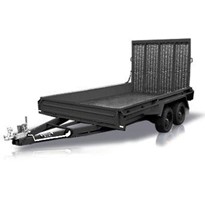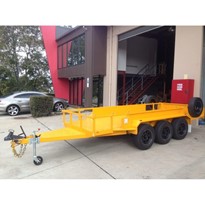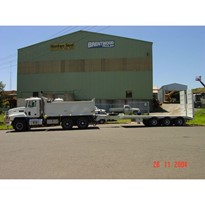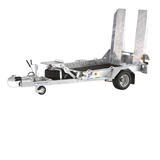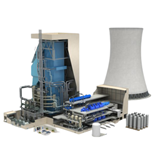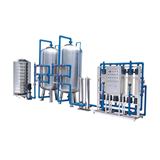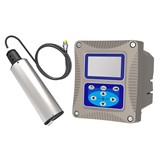These problems - encountered widely throughout the Asia-Pacific and Australasia - require that manufacturers and processors carefully select the technology they use to upgrade waste water quality while ideally generating renewable energy and occupying less space than the older systems they replace.
One company that has provided an answer to the challenges is Global Water Engineering, which has used advanced anaerobic technology at a confectionary plant to meet and exceed environmental objectives within one of the toughest municipal regulatory regimes in Asia, in Bangkok.
The Thai capital, known as the Venice of the East, has strong plans to combat global warming generated by its fast growing population of more than eight million people.
The confectionary plant involved, which is part of an international chain, recently upgraded its waste water and renewable energy plant in line with the city's Action Plan on Global Warming Mitigation 2007-2012, using advanced anaerobic technology from Global Water Engineering that cuts the Chemical Oxygen Demand from discharge water by more than 90 per cent (to 1600mg/l).
The same technology has also been employed in Australian food and beverage plants, where GWE partner CST Wastewater Solutions has employed it with other major organisations, including Golden Circle and SAB Miller's Bluetongue brewery.
The new Bangkok process water treatment plant – occupying only 50-60 sq m – integrates seamlessly into the plant's existing facility to not only lift output standards beyond specification, but also to produce 1,800 Mm3 of biogas a day at nominal load.
"The client has said the installation is fantastic," Jean Pierre Ombregt, GWE's CEO said. "It is exceeding the 90 per cent COD (chemical oxygen demand ) removal specification in service and frequently achieving 95 per cent."
The plant delivers biogas at 70 per cent methane content to power boilers and heat processes that in other plants might consume expensive and polluting bunker oil. And the waste water plant also consumes less energy than before to operate.
"Previously, the plant engineers said they had two big aerators going all the time. Now they find they don't need them, even though they are expanding production. You can see the water is very clean and there is no smell."
The Bangkok wastewater treatment plant consists of pretreatment, anaerobic stages and the previously existing aerobic stage. The pretreatment stage includes a pre-existing equalisation basic and degasifying basic. Prior to entering the anaerobic reactor (UASB) the PH is adjusted by addition of NaOH inline, followed by an inline mixer.
"The confectionary plant installation shows how it is possible to attain top environmental standards of wastewater cleanliness while generating green power on compact sites.
"A high efficiency anaerobic/aerobic system that is properly designed from the outset occupies less space than the system is replaces or upgrades," Ombregt said.
GWE has completed more than 300 water and waste water projects in more than 60 countries including Asia, Africa, North and South America, Australia, China, Europe (including Eastern Europe) and Russia.
GWE clients include companies such as Budweiser, Chang, Carlsberg, Coca Cola, Corn Products Int'l, Danone, Fosters, Heineken, Interbrew, Kraft, National Starch & Chemicals, Nestlé, Pepsi Cola, SAB-Miller, San Miguel, Singha, Sunkist, Tsingtao and many more.
"Green Power from biogas is big news for industry these days, but GWE has successfully built and commissioned more than 75 biogas utilisation systems for clients worldwide over the past 15 years.
"We have completed installations globally that combine specialised know-how in generating biogas with our extensive range of anaerobic reactors, and in supply and installation of biogas re-use and handling systems for fossil fuel replacement or power generation."
The Bangkok confectionary plant's wastewater passes through several pre-treatment steps before entering a GWE methane reactor in which the wastewater's organic content (COD) is digested by bacteria in a closed reactor, degrading the compounds and converting them into valuable biogas and cleaned effluent.
Biogas from the process is collected and reused as renewable energy to power the plant's boiler drying equipment - and in many other instances to generate electricity through on-site generators installed by many food and beverage companies, saving money that would otherwise be spent on bunker oil, which is subject to wide fluctuations in price and which, Jean-Pierre Ombregt says, can only increase in price over time. Surplus power is sold back into the grid.
- Suppliers
- New to IndustrySearch? Book a Demo
- Advertise with us
- Login
- Email Marketing
- Buyers
- Get Quotes
- Articles & Ideas
- Login
- Subscribe to newsletter
- My Details
- Get Quotes
- Automation & Control
- Automotive Workshop Equipment
- Commercial Cleaning Equipment & Supplies
- Construction Equipment & Heavy Machinery
- Conveyor Systems & Components
- Electrical & Power Generation Equipment
- Electronic Components
- Farming & Agriculture
- Food & Beverage Processing
- Forklifts & Forklift Attachments
- Hydraulic & Pneumatic Equipment
- Industrial Materials, Tools & Components
- Industrial Pumps
- IT Hardware & Industrial Computing
- IT Software & Applications
- Laboratory Equipment & Instruments
- Manufacturing & Industrial Equipment
- Material Handling & Lifting Equipment
- Metalworking & Machining
- Mining Equipment & Machinery
- Packaging & Labelling Machinery
- Pallet Handling Equipment
- Personal Protective Equipment
- Security & Surveillance
- Test & Measurement
- Transport & Logistic Equipment
- Warehouse Storage, Shelving & Racking
- Waste Treatment & Environmental Management
- Welding Machines & Accessories
- Woodworking & Joinery Machines
- Workplace Equipment
- Workplace Safety Equipment
- Get Quotes
- Automation & Control
- Automotive Workshop Equipment
- Commercial Cleaning Equipment & Supplies
- Construction Equipment & Heavy Machinery
- Conveyor Systems & Components
- Electrical & Power Generation Equipment
- Electronic Components
- Farming & Agriculture
- Food & Beverage Processing
- Forklifts & Forklift Attachments
- Hydraulic & Pneumatic Equipment
- Industrial Materials, Tools & Components
- Industrial Pumps
- IT Hardware & Industrial Computing
- IT Software & Applications
- Laboratory Equipment & Instruments
- Manufacturing & Industrial Equipment
- Material Handling & Lifting Equipment
- Metalworking & Machining
- Mining Equipment & Machinery
- Packaging & Labelling Machinery
- Pallet Handling Equipment
- Personal Protective Equipment
- Security & Surveillance
- Test & Measurement
- Transport & Logistic Equipment
- Warehouse Storage, Shelving & Racking
- Waste Treatment & Environmental Management
- Welding Machines & Accessories
- Woodworking & Joinery Machines
- Workplace Equipment
- Workplace Safety Equipment
Trusted by 1,000,000+ Australian industrial buyers
Buyers
- Discover products & solutions
- Login
- Subscribe To Newsletter
- Browse All Products
- Read Articles
Suppliers
Advertise
- Promote your products & solutions
- New to IndustrySearch? Book a Demo
- Login / Forgot Password
- Advertise Your Products
- Success Stories
- Email Marketing
- Suppliers
- Advertise with us
- Login
- Email Marketing
- Buyers
- Get Quotes
- Articles & Ideas
- Login
- Subscribe to newsletter
- My Details
Get Quotes
- Automation & Control
- Automotive Workshop Equipment
- Commercial Cleaning Equipment & Supplies
- Construction Equipment & Heavy Machinery
- Conveyor Systems & Components
- Electrical & Power Generation Equipment
- Electronic Components
- Farming & Agriculture
- Food & Beverage Processing
- Forklifts & Forklift Attachments
- Hydraulic & Pneumatic Equipment
- Industrial Materials, Tools & Components
- Industrial Pumps
- IT Hardware & Industrial Computing
- IT Software & Applications
- Laboratory Equipment & Instruments
- Manufacturing & Industrial Equipment
- Material Handling & Lifting Equipment
- Metalworking & Machining
- Mining Equipment & Machinery
- Packaging & Labelling Machinery
- Pallet Handling Equipment
- Personal Protective Equipment
- Security & Surveillance
- Test & Measurement
- Transport & Logistic Equipment
- Warehouse Storage, Shelving & Racking
- Waste Treatment & Environmental Management
- Welding Machines & Accessories
- Woodworking & Joinery Machines
- Workplace Equipment
- Workplace Safety Equipment
Get Quotes
- Automation & Control
- Automotive Workshop Equipment
- Commercial Cleaning Equipment & Supplies
- Construction Equipment & Heavy Machinery
- Conveyor Systems & Components
- Electrical & Power Generation Equipment
- Electronic Components
- Farming & Agriculture
- Food & Beverage Processing
- Forklifts & Forklift Attachments
- Hydraulic & Pneumatic Equipment
- Industrial Materials, Tools & Components
- Industrial Pumps
- IT Hardware & Industrial Computing
- IT Software & Applications
- Laboratory Equipment & Instruments
- Manufacturing & Industrial Equipment
- Material Handling & Lifting Equipment
- Metalworking & Machining
- Mining Equipment & Machinery
- Packaging & Labelling Machinery
- Pallet Handling Equipment
- Personal Protective Equipment
- Security & Surveillance
- Test & Measurement
- Transport & Logistic Equipment
- Warehouse Storage, Shelving & Racking
- Waste Treatment & Environmental Management
- Welding Machines & Accessories
- Woodworking & Joinery Machines
- Workplace Equipment
- Workplace Safety Equipment
Trusted by 1,000,000+ Australian industrial buyers


